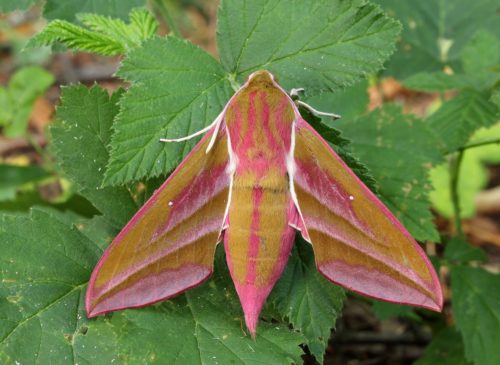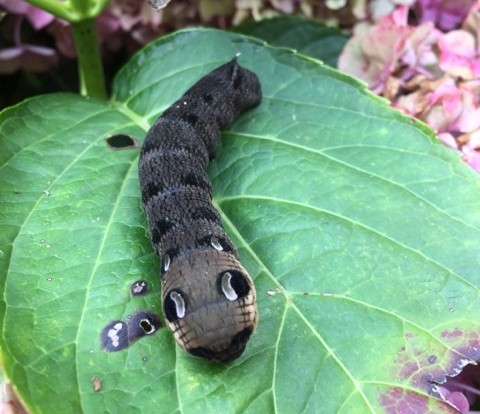Elephant hawk-moth, this 5 cm large moth belongs to the sphinx moths or hawk moths.
Also known as:
Large elephant hawk-moth
Elephant hawk-moth (Deilephila elpenor). This 5 cm (wingspan) large moth belongs to the sphinx moths or hawk moths (Sphingidae). The Elephant hawk-moth is common in Europe and is active as soon as dusk begins. This butterfly is found on grasslands, along forest edges and in gardens. It feeds on nectar from tubular flowers; therefore, it is often found around flowering honeysuckle and fuchsia.
The 8-inch caterpillar of the elephant hawk moth is a striking sight. They feed on the leaves of bedstraw, fireweed, evening primrose and fuchsia; the host plants of the elephant hawk-moth. In early autumn, the caterpillar makes a brown-colored cocoon among fallen leaves (litter layer). The butterfly, colored with red and green pastel shades, emerges in late May and early June.
Where to find
- Ornamental and vegetable garden
Control
The caterpillars of the Elephant hawk-moth are not harmful.
Prevention
Does not apply.


